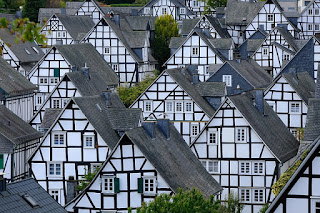Urbanization
Is the physical growth of rural and natural land into urban areas as a result of population immigration to an existing urban area. It has two involved aspects for change firstly, involves movement from villages to cities and changes from agricultural occupation to business trade, service and profession secondly, it also involves a change in the migrant's attitude, beliefs, values and behaviour pattern. Though urban areas are more advanced and developed but facing a lot of problems due to many reasons like lack of management & migration. Following are the main and prominent problems of urban areas of Pakistan;
Rural Areas
Are separately settled places away from the influence of large cities and towns. A rural area is an open strip of land that has few homes or other buildings and not many people. In rural areas people engaged in agricultural occupation. Most of the areas bear rural character. Generally, rural areas are less developing but in Pakistan, there is a wider gap between Urban and Rural standards of living. It is necessary to minimize this gap to make a prosperous Pakistan in future, there are so many problems faced by rural society, such as new Dams are not being constructed. So, optimum use of water is not being possible. Water logging& sanitation is also a problem. Wastage of cultivated land is very common in Sindh and Punjab because of the above-mentioned problem that must be negotiated. In ruler, areas found the following problems.
 |
| Problems of Urban and Rural Areas |
Culture and society
To live in a 'group' or 'society' people have to evolve certain patterns, these patterns provide a framework within which the members of the group are expected to operate. Obviously, this framework is base on some sort of mechanism or system. Here we need to investigate, why each group or society, evolves a distinct system and how this system develops? To understand components of this system we have discussed cultural content, the structure of culture, cultural landscape. cultural differences &uniformities, sub-cultures, counter cultures and types of cultures.
The modern concept of culture has become so wide that it is difficult to arrive at a definition acceptable to all. No less than one hundred and fifty definitions of culture may be proposed by the scholars, but each of these definitions, at best, emphasizes only one aspect of it, which, however, fails to satisfy others. It, therefore, follows that each of these represents a part of the culture and is, therefore, not comprehensive enough. However, the following precise definitions are selected for our students; Culture has been interpreted variously as a form of social and corporate life, or expression of the highest intellectual life or simply as an instrument for fulfilling the material requirements. Culture is the way of life of the population, all their ways of doing things, all the kinds of behaviour they have learned and transmitted to successive generations
people communicate, in the way they perceive and exploit their resources. Most important, in the way, they organize that part of the earth that is theirs. Culture may be defined as the way of life of any society. Culture is the continually changing patterns of learned behaviour and the product of learned behaviour which are shared by and transmitted among the members of society. Thus, culture, more precisely, may be defined as a social order in all its totality. This includes traditions, history, customs, manners, language, dress and other social traits as growing under a certain geophysical environment.
